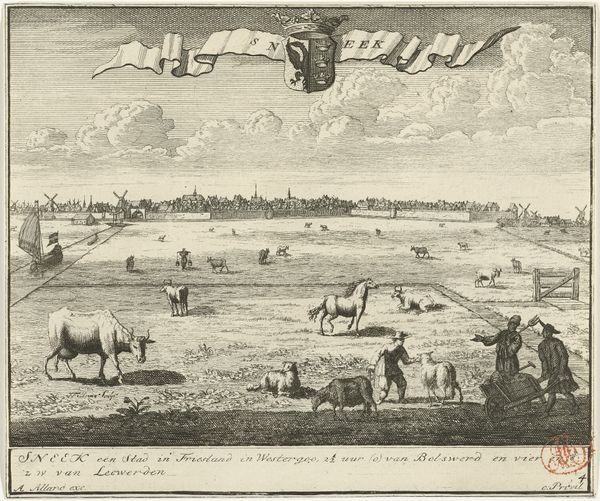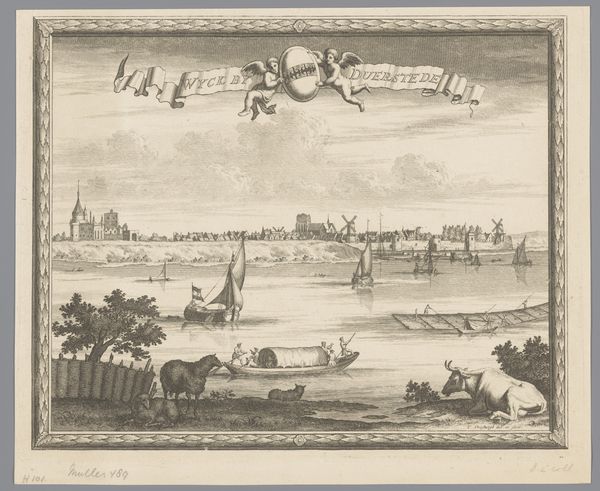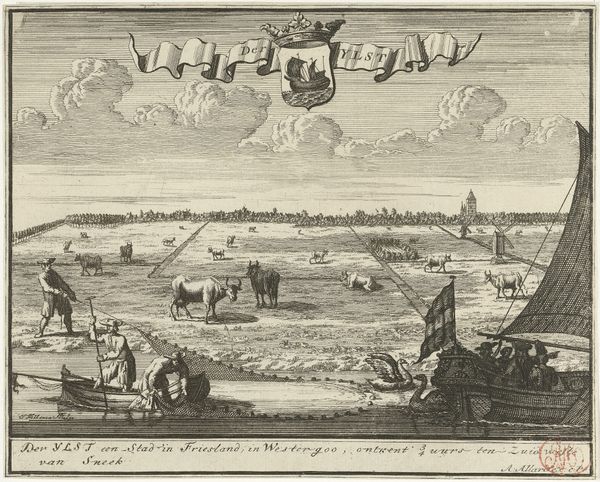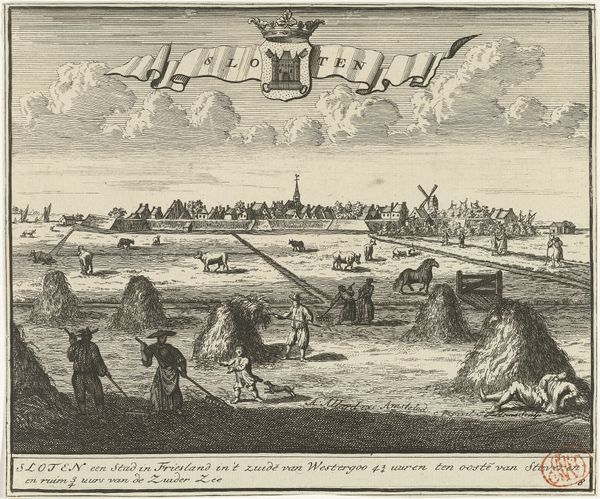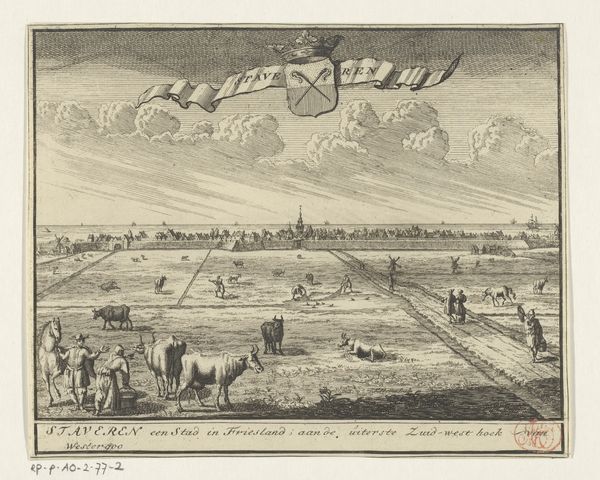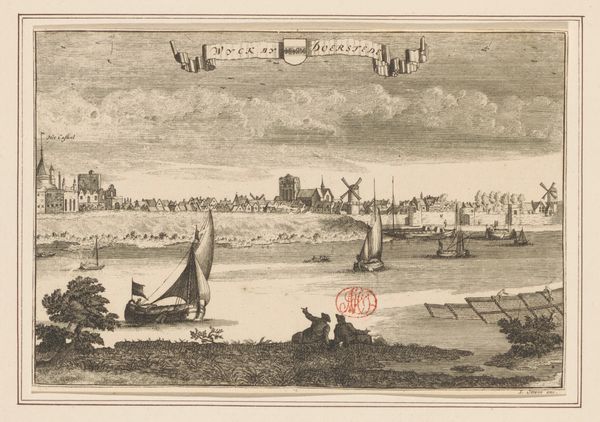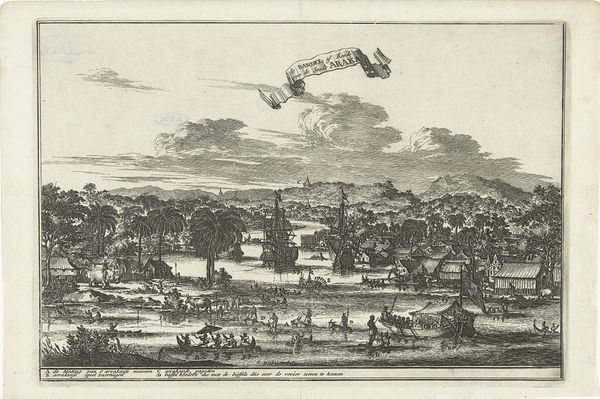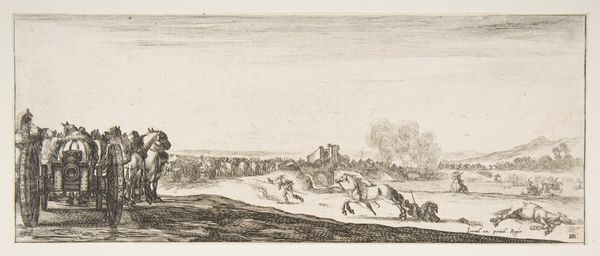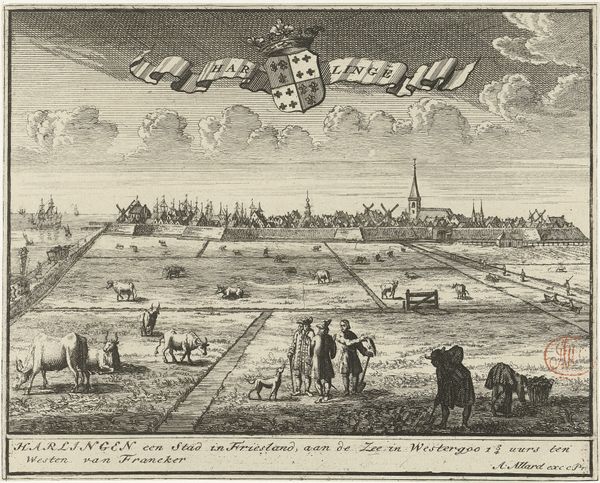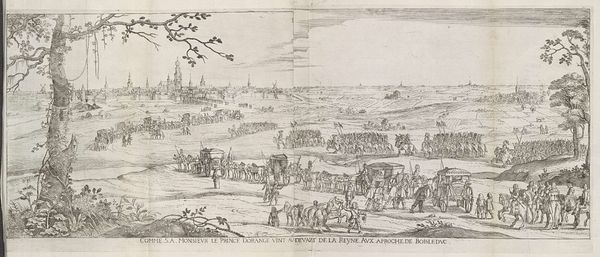
print, engraving
#
baroque
#
dutch-golden-age
# print
#
landscape
#
figuration
#
cityscape
#
engraving
#
realism
Dimensions: height 183 mm, width 274 mm
Copyright: Rijks Museum: Open Domain
Curator: Let's examine this engraving, "Gezicht op Sneek," believed to have been created between 1702 and 1767 by Jacob Folkema. It’s currently housed at the Rijksmuseum. Immediately noticeable is the detailed depiction of both rural life and a distant cityscape. What are your initial impressions? Editor: A melancholic peace washes over me. All that empty space above the livestock makes me feel lonely, even with the busy-ness of those miniature laborers in the lower right-hand corner. It's stark, beautiful, and a little sad. Curator: The printmaking process itself interests me. The clear, sharp lines suggest a deliberate, labour-intensive process using engraving. We see this detailed technique capturing both the natural setting, where agricultural labor seems central, and the cityscape as a marker of trade and burgeoning urban development. The livestock signifies agricultural production which underpins the city’s economy. Editor: Absolutely, it’s a document of how things were, yes, but the real charm for me is in the story it whispers. Look at the clouds—are they churning, or are they cotton? The contrast captures a specific moment. Did he draw on-site and endure all weather conditions or try to do so from memory? I think that unknown creates depth. Curator: It would have taken painstaking labour to render the pastoral setting, figures, city structures and livestock to give us what approximates realism. Each component required its own labour process. I am particularly drawn to how it marries the aesthetic of landscape with clear figuration. Editor: Exactly! You see Sneek, but feel the pulse of the 17th or 18th century in the same glance. How different the life back then must have been for those laborers depicted compared to the privileged class. Even though this print romanticizes it a bit, of course. Curator: Prints were more widely disseminated compared to paintings so perhaps this cityscape served the purpose of social document or proto-photography in the way it attempted to portray "Sneek" or a landscape in an objective sense. Editor: Ultimately, this work serves as a potent meditation on time itself. It reminds us how quickly the world turns, one day flowing inevitably into the next. But this artist saw value in an unassuming, perhaps easily overlooked landscape and preserved it for generations to enjoy. Curator: Agreed. It's rewarding to analyze how its materials, techniques and themes combine. The tension between its subject matter and methods truly adds complexity.
Comments
No comments
Be the first to comment and join the conversation on the ultimate creative platform.
